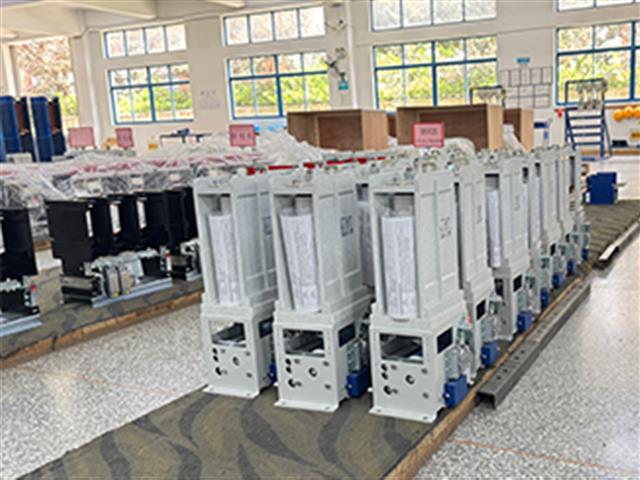High frequency dc solid state relay, the application and features you may know.
A high-frequency solid-state relay (SSR) is designed to operate effectively at frequencies ranging from 10 Hz to 1000 Hz. This means it can switch on and off or modulate power to a load at these frequencies, which is much faster than the typical mechanical relay.
10-1000Hz, 2400VDC Solid State Relays
Applications of High-Frequency Solid State Relays:
- PWM (Pulse Width Modulation) Applications:These relays are often used in circuits that require precise control of power delivery through PWM, which involves switching the power supply on and off at a high frequency.
- Induction Heating:High-frequency SSRs are suitable for induction heating applications where the power delivery needs to be modulated at high frequencies to control the heating process effectively.
- Motor Speed Controls:In applications where motor speeds need to be controlled with precision, high-frequency SSRs can be used to adjust the power supplied to the motor.
- Audio/Signal Switching:Some high-fidelity audio applications or signal routing systems might use high-frequency SSRs to switch audio signals without introducing noise or distortion.
- Telecommunications:High-frequency SSRs can be used in RF (radio frequency) applications and telecommunications for switching signals without affecting their integrity.
- Power Supplies:Switch-mode power supplies (SMPS) often operate at high frequencies, and SSRs in these systems can be used for overcurrent protection or as part of the control circuitry.
Features of High-Frequency Solid State Relays:
-
Fast Switching Times:They can switch on and off very quickly, which is essential for high-frequency applications.
-
Low On-Resistance:High-frequency SSRs typically have a low on-resistance, which reduces power loss and heat generation when the relay is conducting.
-
Heat Management:Due to the potential for heat build-up at high switching frequencies, these SSRs are often designed with effective heat dissipation features.
-
High Reliability:With no moving parts, these relays are highly reliable, even when subjected to frequent switching.
-
Noise Immunity:Solid-state relays generate less electrical noise during operation compared to mechanical relays, which is important in sensitive electronic applications.
-
Electrical Isolation:Like other SSRs, high-frequency versions offer electrical isolation between the control circuit and the load, providing safety and protecting delicate electronics.
When selecting a high-frequency SSR for an application, it is important to consider parameters such as the voltage and current ratings, thermal management requirements, and the specific characteristics of the load being switched. Proper selection ensures reliable operation and longevity of both the SSR and the controlled system.

GVC/EVC Series Low Voltage Medium Voltage Vacuum Starter Contactor: Advanced Solutions for Reliable Motor Control in Various Industries
The GVC type is suitable for AC systems with a frequency of 50Hz or 60Hz, a rated voltage of 1140V, 1.5KV, 2KV, 3.6KV and a rated current ranging from 63A to 3200A. The EVC type is suitable for AC systems with a frequency of 50Hz or 60Hz, a rated voltage of 7.2KV, 12KV, 24KV, 36KV, 40.5KV and a rated current ranging from 250A to 800A.
Read More
Solid State Relay: A Comparison of PLC Interface and Panel Mount
Differences Between PLC Interface and Panel Mount Solid State Relays
Read More
Exploring the Smartguard Solid State Relay: A Game-Changer for Industrial Automation
Is the Intelligent SSR Right for You? Diagnostics, RS485, Modbus communication, Intelligent detection SSR, LED display.
Read More
High power Rectifier Diodes and Phase Control Thyristors (PCT)
High power rectifier diodes and Phase Control Thyristors (PCT) for SVC, HVDC, soft-starter and power supplies with "Topsil" brand silicon from Danmark,"LEM" test equipment
Read More














